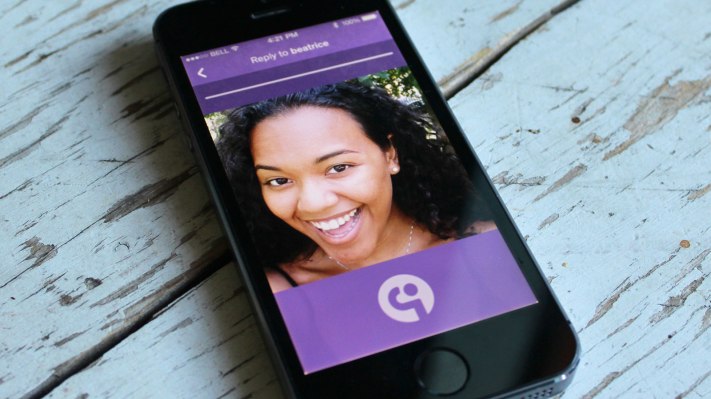A year ago, “selfie” had just been added to the Oxford Dictionaries Online. At the same time, we were just discovering Selfie.com, a mysterious landing page for a “Selfie” service. All we knew at the time was that it was led by Hugh Dornbush and had raised some seed money.
Today, however, the company is lifting the veil.
Meet Selfie, the app that lets you send video selfies to your friends or the whole network to have back-and-forth Selfie conversations. The main premise is that we are constantly trying to find ways to express ourselves, from all the way back to the letter and the phone to Twitter and FaceTime, but that there is still an empty spot where asynchronous face-to-face communication should be.
That said, the app lets you record a 24-second video that can either be posted publicly or privately to a set list of friends. Other users can then reply to it, and other users can reply to those, and more people join, each individual selfie grows into a web of conversation.
“We view it as a place where you go to have in-person conversations with other people, just like you do in the real world,” said Hugh Dornbush, CEO and co-founder. “Some conversations are public with strangers, and some are private with closer groups of friends.”
And just like the real-world, there are no filters or friend counts. Unlike many social networks, Selfie tries hard not to quantify the value of your profile, and the app doesn’t want you to compete for followers or likes. The app still includes likes, giving users a lighter way to engage with each other than the heavy-handed ask of a video selfie response.
Perhaps counter-intuitively, the app does show like counts.
“Filters and follower counts, needing to project an image that is dissimilar to reality… we see these as the sort of thing that cause the anxiety and depression associated with social media,” said Dornbush. “When we were building the service, we didn’t want to be the sort of service that always required this veil where people are pretending things are different from reality. We’re hoping to offer a platform where people are increasingly comfortable with reality.”
This doesn’t comfort me, personally. I see the internet as a place where you absolutely must put your best foot forward, or else subject yourself to ridicule. I have yet to post my first Selfie.
But from what I can see on the platform from my own feed (I’ve been on the beta for a while now), there is a refreshing sense of openness on Selfie. People are sharing, whether it’s silly or thoughtful or pained or excited.
From a selfie by co-founder Alexander Lasky this morning:
“Looking back over the last number of months and thinking about Selfie, I think about how we created this so we can bring people together, let people connect face-to-face the way people are supposed to talk, and how important that is. I’m talking through a glass screen, and I’ve never felt so connected to people.”
Posting a selfie video seems like a vulnerable experience to translate over to the internet, but seeing the way that people flock to respond to each video leads me to believe that users’ vulnerability may be rewarded with something greater than the eleventh like.
[gallery columns="5" ids="1061493,1061494,1061495,1061496,1061497"]
But what about the name? Selfie.
“When we first decided to call it Selfie, the word hadn’t really picked up the same way it has now,” said Dornbush. “We were trying to come up with the right name for expressing yourself, and came across two girls in a bar taking a pic together. When we asked what they were doing, they said ‘It’s a selfie, duh.’ That’s when we knew we had it.”
This was in May 2012, before selfie had been named the 2013 Word of the Year by the OED. Now, with $1.5 million in funding, the app faces the challenge of educating people on the difference between their known association of selfie (as a static picture) and the new behavior of Selfie as a brand (to take a video). This is more difficult than it might sound.
Beyond just associating selfie with a static photo, the term selfie also connotes a photo that is trying to look beautiful. A headshot, even. A selfie is meant to be attractive, and be sent out to the world for feedback. Which is why I’m in a fight with iOS 8 right now.
Though Selfie asks a lot from users who, like myself, may be shy about posting a video of themselves on a social network, the engagement is certainly there during this beta period.
Could this be the beginning of a more realistic digital identity?
You can check out Selfie here and we can find out together, yes?
